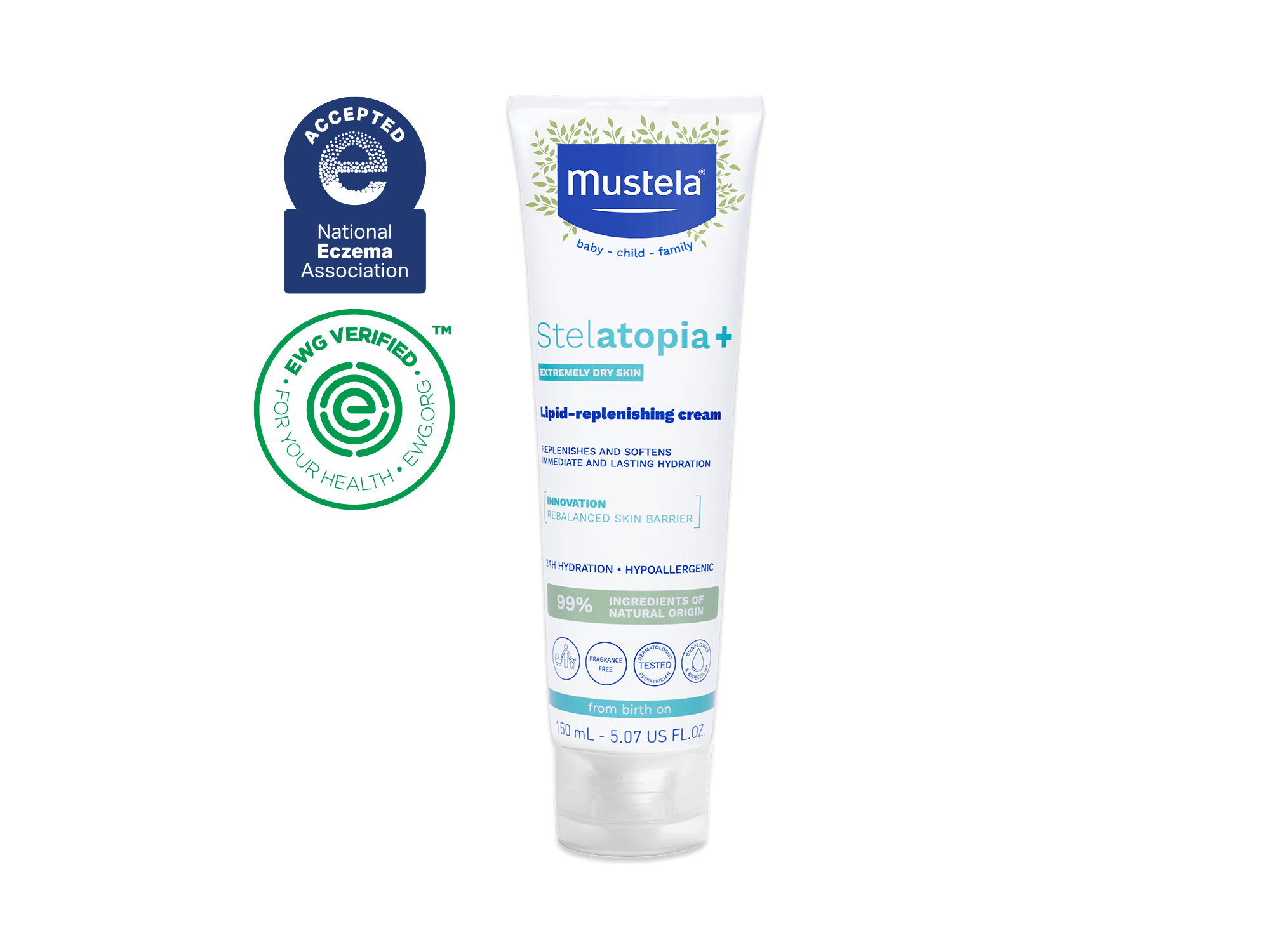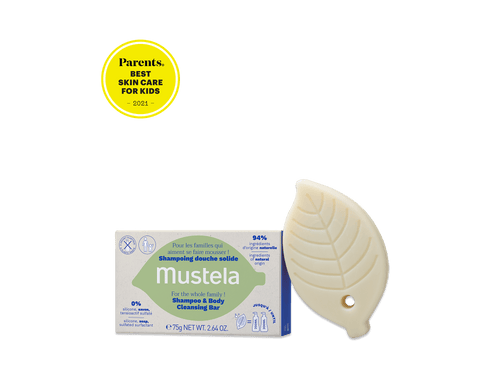Now that the newborn days are behind you, a new normal should be settling in. However, as your baby starts sleeping a bit more (hopefully!) and going longer between meals, you may wonder what a 3 month old feeding schedule should look like.
While there’s no such thing as a one-size-fits-all approach to feeding your baby, understanding their nutritional needs can help you create a routine that works for you both.
Table Of Contents
- 3 Month Old Feeding Schedule: The Basics
- What Does A 3 Month Old Feeding Schedule Look Like?
- Tips For Making A Feeding Schedule Work For You
3 Month Old Feeding Schedule: The Basics

At this age, the only food your child needs is breast milk or formula. The American Academy of Pediatrics recommends babies consume breast milk for the first six months of their life, though formula is a perfectly acceptable alternative.
Whether nursing or offering formula, your little one needs 4-6 ounces every few hours. This means they’ll eat 6-8 times a day. In addition, some babies will wake up for more at night.
Of course, your baby’s unique nutritional needs depend on many factors, including their size and individual eating habits. If you’re ever concerned about their feeding schedule, consult your pediatrician for personalized advice.
Benefits Of A Feeding Schedule
Some parents feed their babies on demand. Others prefer to stick to a 3 month old feeding schedule. If you’re trying to decide if you should schedule your little one’s meals, here are some benefits to consider.
- Establishes a routine: A consistent schedule can help your baby feel secure and safe. They’ll know what to expect, which is comforting.
- Helps establish good eating habits: Instead of grazing all day, a feeding schedule can help your baby recognize hunger cues and distinguish hunger from other feelings.
- Makes it easier to plan: If you need to go shopping or run some errands, knowing when your baby needs to eat can help. You’ll be able to plan your day around feeds and not get caught by surprise.
- Minimizes overeating: If you’re constantly feeding your baby throughout the day, overeating becomes a real possibility. This can lead to stomach pains and discomfort, making it harder for your baby to sleep.
Downsides Of A Feeding Schedule
Of course, a feeding schedule isn’t a golden ticket to an easy parenting experience. Otherwise, everyone would use one. This approach has some downsides, including:
- Frustration over changes: If you’re trying to stick to a schedule, you may feel frustrated by your baby’s sudden need to cluster feed. To avoid this, remember your schedule is just a tool to help. It’s not written in stone.
- Feeling tied to the clock: Being hyper-focused on time can be burdensome. If you feel like you’re constantly watching the clock, take some time to watch your baby instead and feed them when they’re showing signs of hunger.
- May impact your milk supply: When your baby goes through a growth spurt, they’ll need more food to help them grow. The increased demand kicks your milk production into overdrive. You may struggle with your supply if you only feed when the schedule says.
As you can see, a 3 month old feeding schedule has pros and cons. It's up to you to decide whether or not you want to try one.
What Does A 3 Month Old Feeding Schedule Look Like?

If you want to use a schedule to ensure your baby is eating enough, here are a couple of samples to try. One is for breastfed babies, and the other is for those consuming formula.
3 Month Old Breastfeeding Schedule
Now that your baby is three months old, they need to nurse every 3-4 hours. Plan on them eating for 15 minutes on each breast, though some babies are more efficient and can finish their meals more quickly.
Once your baby is finished nursing, it’s time for some play. Babies at this age have about a 1½ to 2-hour wake window perfect for reading a book together, playing peekaboo, doing tummy time, or going on a walk. Then, they’ll need to get some rest.
Here’s one example of how that might work:
- 6:30 a.m.: Wake, nurse, play
- 8:30 a.m.: Nap
- 9:45 a.m.: Wake, nurse, play
- 11:30 a.m.: Nap
- 1:00 p.m.: Wake, nurse, play
- 2:30 p.m.: Nap
- 4:00 p.m.: Wake, nurse, play
- 6:00 p.m.: Short Nap
- 6:30 p.m.: Wake, nurse, play
- 8:00 p.m.: Get ready for bed, nurse
- 8:30 p.m.: Bed
- 11:00 p.m.: Wake for a dream feed
Then, you’d feed your baby as needed during the night.
Since your baby is still nursing fairly frequently, your nipples may become sore. Try our Organic Nursing Comfort Balm to help protect this delicate area.
3 Month Old Formula Feeding Schedule

Formula-fed babies can often go a little longer between meals since this type of milk digests more slowly.
Plan on giving your little one 4-6 ounces every 3 ½ to 4 hours. When you add up the bottles, they should be consuming 24-32 ounces daily.
Here’s a sample feeding plan:
7:00 a.m.: Wake, eat, play
9:00 a.m.: Nap
11:00 a.m.: Wake, eat, play
12:30 p.m.: Nap
2:30 p.m.: Wake, eat, play
4:30 p.m.: Nap
6:00 p.m.: Wake, eat, play
7:45 p.m.: Get ready for bed
8:00 p.m.: Bottle, then bed
11:30 p.m.: Wake for a dream feed
Tips For Making A Feeding Schedule Work For You
Since no two babies are the same, the sample feeding schedules above will likely need to be adjusted to work for your little one. Use these tips to create the perfect schedule for you.
Consider Your Baby’s Natural Schedule
As much as possible, build your schedule around when your baby naturally wakes up in the morning, has long naps, and is ready for bed.
Honoring your baby’s unique rhythms can help them get the rest they need. And it makes it easier to stick with your schedule consistently.
Check In With Your Pediatrician
If you haven’t implemented a feeding schedule yet, touch base with your child’s doctor about the one you have planned. That way, they can verify that it meets your baby’s nutritional needs.
This is also a great opportunity to discuss any questions or concerns about feeding your little one.
Be Patient
Getting your baby on a schedule isn’t an overnight process. It’ll take some time for them to adapt, so be patient.
Aim to keep the same basic routine for several days to help them get used to it. After that, it’ll be smooth sailing. At least until next month when the dreaded four-month sleep regression starts.
Stay Flexible
No matter how consistent you are, some days won’t go as planned. That’s OK.
Allow yourself the flexibility to tweak things as needed. For example, if you get stuck in traffic on the way home and your baby has to wait a little longer than usual to eat, don’t stress.
Feed them whenever you arrive safely home. Then, push the rest of the day’s schedule back to accommodate.
Monitor Their Output
Newton’s third law of motion discusses actions and reactions. That scientific rule applies to feedings, too: What goes in must come out. By keeping track of your baby’s output, you can ensure your feeding schedule meets their needs.
Count how many wet diapers you change each day. It should be between 8 and 10. If your little one isn’t going as often, you may need to feed them more.
You should also make sure they have regular bowel movements. While some babies go several times a day, others go much less frequently. As long as their poop stays soft, they’re likely not constipated.
While changing your baby, apply some Mustela Liniment in the area. This moisturizing cleansing lotion helps keep their skin soft.
Got Milk?

Whether you implement a 3 month old feeding schedule or simply offer your baby breast milk or formula when they show signs of hunger, your goal is to give them the nutrients they need to thrive.
To keep your nipples nourished as you feed your little one, pick up some Organic Nursing Comfort Balm. Then, settle down together and enjoy a few snuggles! After all, they won’t be little for long.














